Now honestly overwhelming the corner post of the fence around the pool deck, and beyond, the southern native, the Crossvine is shown in several photos. Bignonia capreolata. Overwhelming success after a number of attempts.
And with an admixture of wanted and unwanted vines. But those tend to wander obnoxiously, and defy all efforts at organization. They include ones that seemed desirable, but the goal is to take over the Planet. One is the Porcelain Vine, with beautiful blue berries, the Akebia, that is right next door to that post, and here a branch of Corylopsis pauciflora, that should be on the other side of the fence.
To the far left is the blooms of a vine that once was alone, dominating that corner pole. The southern native Honeysuckle, Lonicera sempervirens, but in a spectacular orange form.
Really surprised at the long time the white Bleeding Heart has been in bloom.
Have had this double white Clematis on the screen behind the little rock garden for years. Unsure of the name and if I ever really, purposely, bought and planted it.
Will continue using it, but this camera seems to report in a rather muddy manner. This Tradescantia virginica looks really nice in life, but not special here. I repeat myself, but the woman who sold us this property was familiar with this flower, but only its local name. Such names fascinate me, as folks with no education in plants, passed on names they heard, with the originator of the name unknown. She called these plants 'Noonsleeps' and, unless it is rainy, they usually are fading by noon. It was about 10:30 AM, and I can see they already are folding. I tear these off at the ground, and doing that 2x makes them so weak that the clump does not come back. But I will never be without them, as they are vigorous and find my garden ideal.

Among the first shrubs we planted were these pale pink, fading to white, Rhododendrons called R. chionoides. We, somehow, avoided the commonest purply pink color. Perhaps consistency, on my part, as orchid or pink is not a favorite shade, but surely pretty common on the property, after all. Gigantic, 12 foot high shrubs, now covering many square yards, blocking the view of the house and the main bedroom, which was the original intent.
In time I will figure out how to easily get rid of unwanted duplicate photos. I can figure out a work around but it makes me want to take a nap.
Here is another photo of the Honeysuckle that once dominated that corner post. The seller sold it as L. sempervirens 'Magnifica'.
The Blushing Knockout Roses, in the center bed of the lawn, are looking good. No Deer browsing, which is a serious problem. And I did use repellent, but after every rain I have to apply the spray again.
This really huge Doghobble evergreen, Leucothoe axialaris, edges the lawn, not far from the little pond. I see the blooms are already showing some tarnish, as they fade.
The almost microscopic blooms on the Blue Star Creeper. Isotoma fluviatilis. Or Laurentia fluviatilis.
Tempted, by its brilliance, and now posting it seems not so great. And I cannot delete the image, only minimize it.
Makes little sense, at first, but this is the edge of the little pool, with a potted up clump of a water plant starting to look really good. Such plants are called emergents, but do fine if submersed. This plant is Myriophyllum brasiliensis, I think. The Red Stemmed Parrot Feather. Why last years plants did not make it through the Winter is a mystery, as this species is supposed to be hardy North of here.
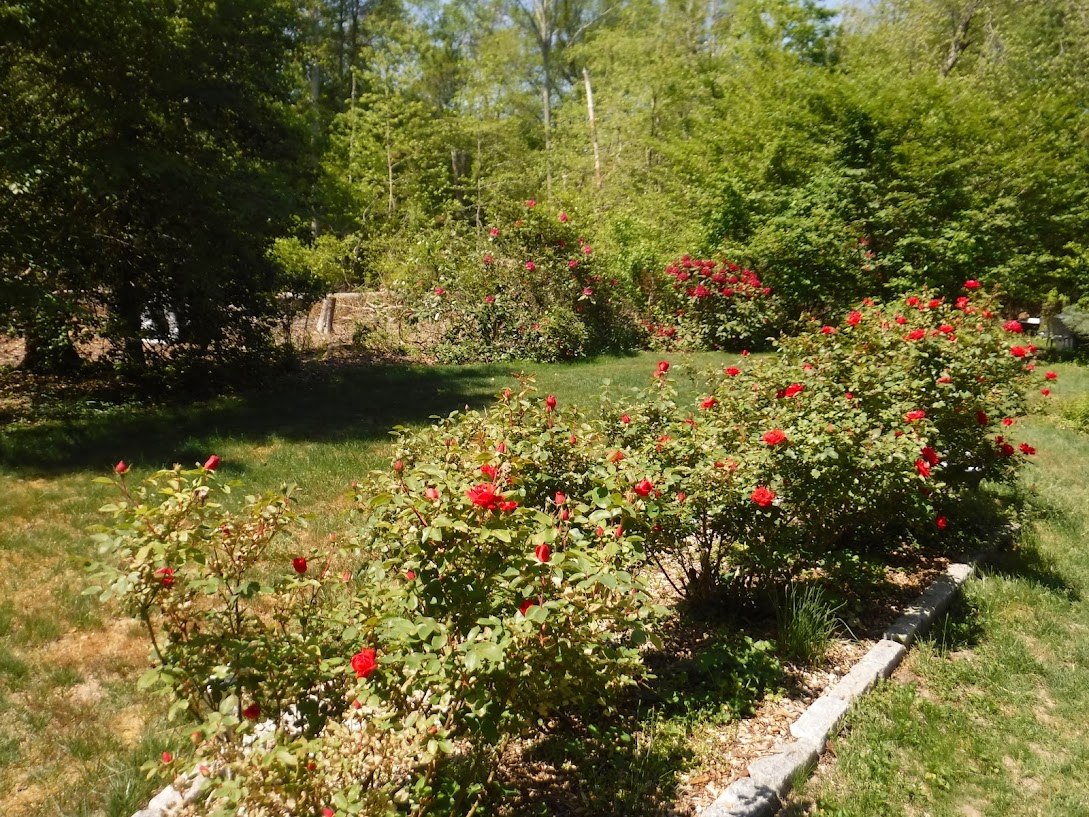
This photo shows the shabby lawn, but also the nicely blooming Double Red Knockout Roses, in that lens shaped bed outside the addition, and, across the lawn, the two red Rhododendrons. The really magnificent 'Francesca' and one of the famous old Ironclads called Ironclad Red. The contrast between these two sorts is clear.

Just a small pot of Chives, not far from the kitchen. Apparently, you can eat the flowers. A white-flowered sort exists, and I would get it if I saw it offered somewhere locally.
All the various sorts of Honeysuckle are budded out or blooming. This is a variety of L. sempervirens. Generally a Southern species, with many different clones available. Scentless, unlike the Japanese Honeysuckle, that is such a pest here. This yellow is L. s. 'John Clayton'.
I will wait until the Japanese sort blooms, and then that will allow me to trace and try to hold it back from burying the entire property.
Cannot recall a new and different sort, actually in a pot, anywhere, that I refused to buy and move here. Most succeeded, but not all. And, sometimes, I bought the same sort again, for another location, only to see, later, that the blooming was not identical. So the trade is not to be trusted.
This is the Japanese Styrax tree, Styrax japonica 'Emerald Pagoda'. It has a strange, not unpleasant smell, to me.
'Isana Guidi'. That is the name I recall for the only Peony on the property. The single is typically attributed to Japanese. It does lose its pink color, in time. Only a few blooms, and the plant is, likely, well over 50 years here. I am told they bloom less if deep in the soil, and that is likely, with accumulated leaves, etc. over a lifetime.
A few blooms of the Clematis 'Ramona'. Wandered off, left, from where it was planted on the lattice behind the little rock garden, and also into the lattice that hides the side of the pool and even into the pole at one end of the fence that surrounds the pool deck.
This may well be the Clematis 'Duchess of Edinberg'. It puts out a few blooms, annually, on the lattice behind the little rock garden. A rather smaller bloom, and, as I said, I cannot recall buying of planting it.
Typical of the old pink fading to white Rhododendron 'Chionoides', now in huge banks in the front of the house.
Probably a Chinese species of Honeysuckle, growing and now wandering away from the lattice behind the little rock garden. Scentless.
The only Siberian Iris thriving here. Named 'Lights of Paris'. A smaller clump than it has been,
The two foot tall hardy Geranium sanguineum, but, I chose the white-flowered sort. It may get even more bloom. In the main perennial bed.
Growing on the pole at one end of the fence around the pool deck. And it amuses me to refer to such a mess of color, with no sense of complimentary colors, as an explosion in a paint factory.
Clematis has invaded here, also.
Overwhelming, now, when once difficult to get started. Bignonia capreolata, the Cross Vine, and likely the sort 'Red Dragon'.
Various shots of the Rose and Honeysuckle that compete on one pole surrounding the pool deck. The Rose seems amazingly disease and insect resistant, while quite thorny. Climbing Rose called 'Winner's Circle. The Honeysuckle is Lonicera tellmanianna. I don't know if it is European or Oriental, but it is also scentless.
Bit this species, L tragophylla is Chinese. It wanders up into the shrubbery on the left of the little rock garden. It was, originally, planted on the lattice at the back of the little rock garden. It, also, is scentless.
In the main perennial bed, two perennials share the same space. This is Stachys byzanticum 'Helene Von Stein', I think. It will look better and better as the Summer comes on, and then die down in Fall. It shares the area with Arum italicum, which emerges in Fall and fades away this time of year. While I have seen blooming species of Stachys, I am glad this clone of H.byzanticum has never bloomed, in the many years it has been here.
















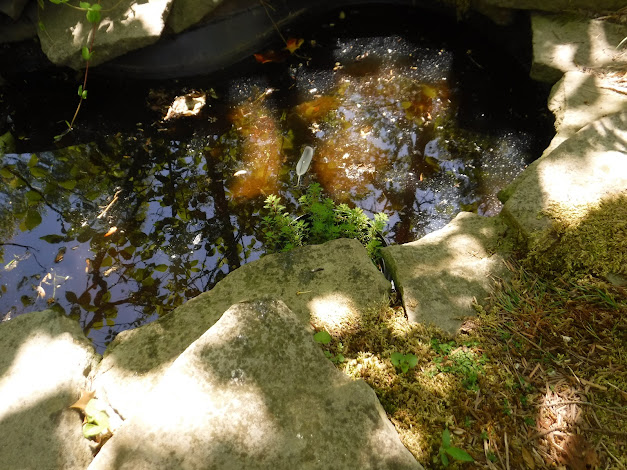

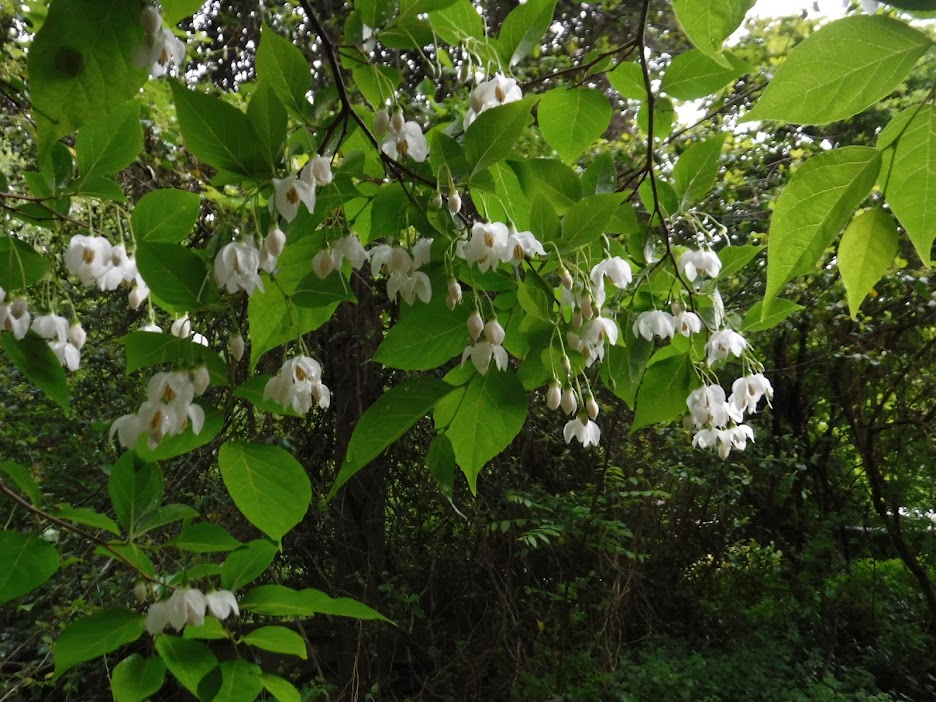

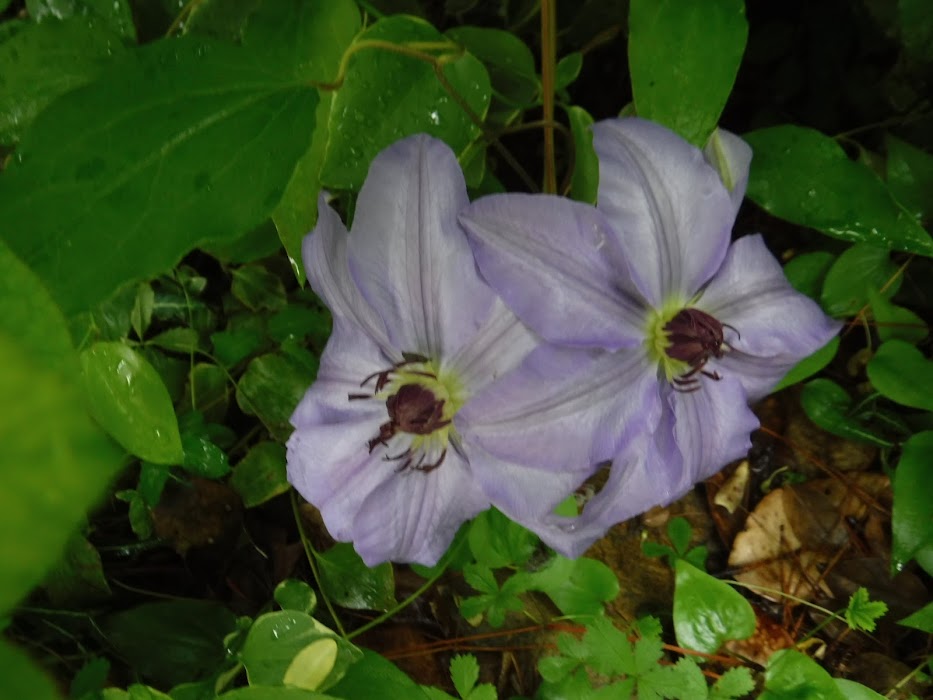




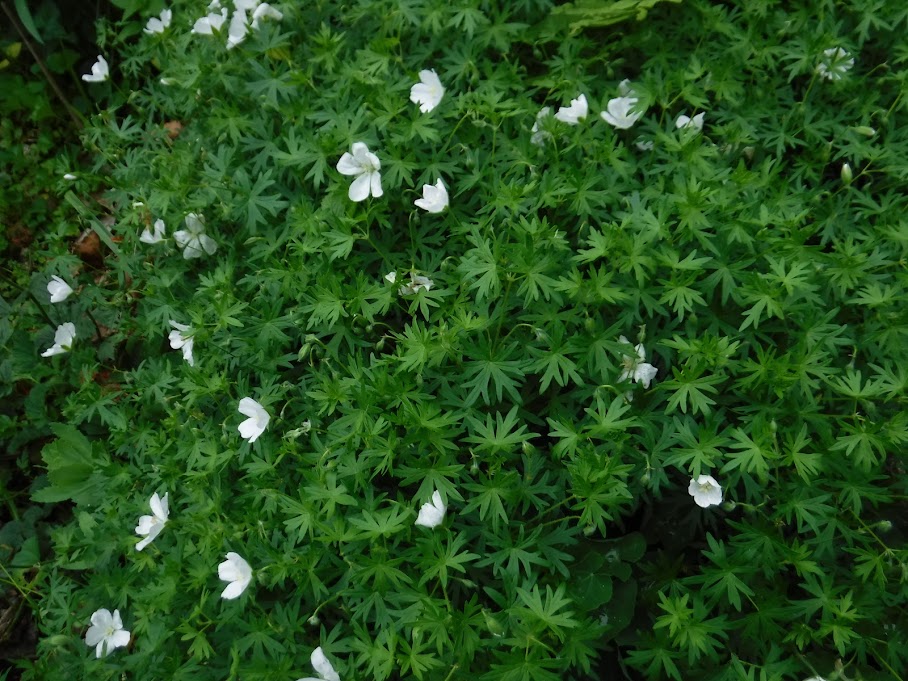



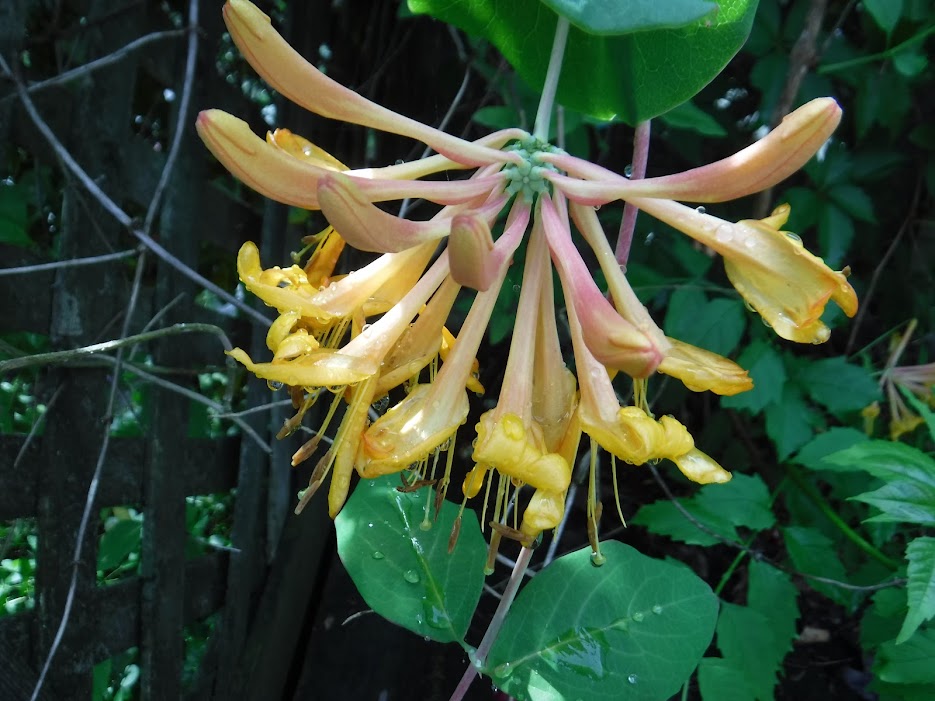







Love the styrax
ReplyDelete